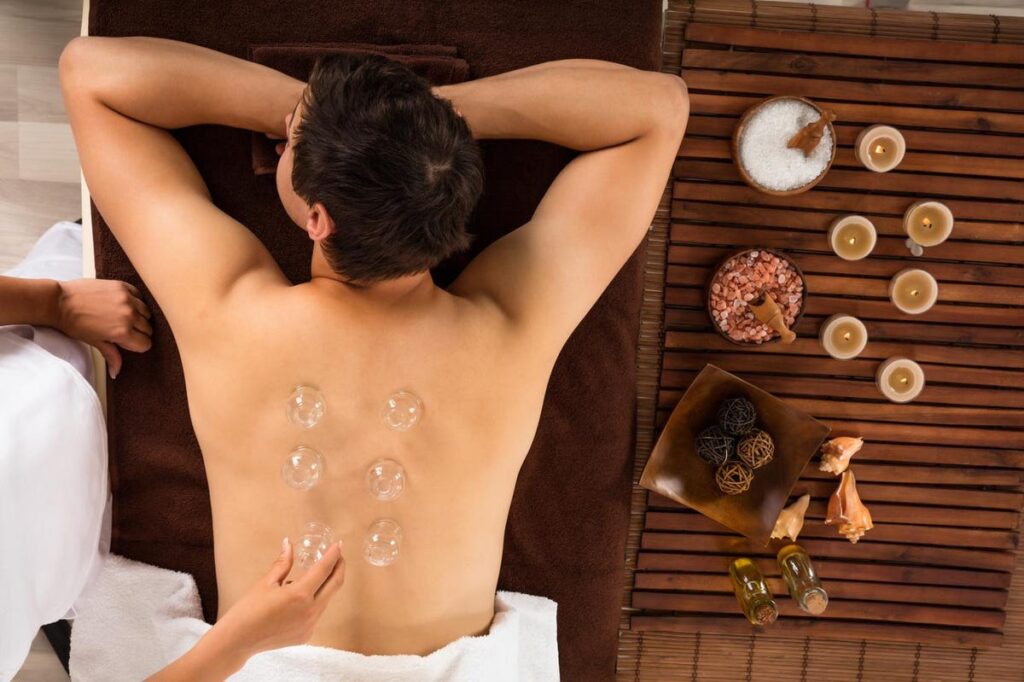Cupping therapy is a form of alternative medicine that has been practiced for many years. The treatment involves placing cups made of plastic or glass on specific areas of the body to create a vacuum that draws the skin and underlying tissue up into the cup. The suction effect created by the cups is like a deep tissue massage and is believed to promote recovery and provide a range of health benefits.
As a result, cupping is commonly used by physical therapists to treat a range of different injuries and conditions, from sporting injuries to general aches and pains. At Integrative Physical Therapy, our physical therapists use cupping to alleviate pain and boost recovery for our patients. Keep reading to learn more about cupping therapy in Jacksonville, FL.
Therapeutic Cupping
Cupping is a rehabilitative treatment technique used by physical therapists. There are several different types of cupping therapy, each used in different settings by different clinicians. At Integrative Physical Therapy, our physical therapists use dry cupping as this provides the maximal benefits whilst minimising any risk of side effects. Dry cupping involves creating a vacuum in the cups by using a hand pump.
Cupping therapy can be performed in a variety of settings, however therapeutic cupping in a rehabilitative setting is performed only by trained physical therapists. Physical therapists are specifically trained to assess and treat injuries, prescribing the correct treatment for the right situation. To prevent injury and get the best outcome, it’s important to consult a qualified physical therapist for any cupping treatment.
Some of the conditions cupping is used for include:
- Back pain: Cupping therapy can be effective in reducing pain and discomfort caused by chronic back pain, lower back pain, and sciatica.
- Neck and shoulder pain: Cupping therapy can help to alleviate tension and discomfort in the muscles of the neck and shoulders, which can be caused by issues such as poor posture.
- Sports injuries: Cupping therapy can be used to treat sports injuries such as strains, sprains, and muscle soreness.
- Arthritis: Cupping therapy can help to reduce inflammation and pain associated with arthritis. As arthritis affects each person differently, therapeutic cupping can be tailored to the area and needs of the patient.
- Headaches: Cupping therapy can be used to reduce muscle tension, helping to alleviate some forms of headaches.
What Cupping Therapy Does
So, what does cupping therapy do? Here are some of the ways that cupping therapy is believed to provide benefit:
Relieves pain
Cupping therapy is often used to relieve pain, particularly in the back, neck, and shoulders. The suction effect created by the cups is thought to promote blood flow to the affected area, which can help to reduce inflammation and alleviate pain.
Targets specific injuries
Cupping therapy can be used to target different injuries and conditions as the cups can be applied to specific areas of the body. Depending on the location and severity of the injury, the cups may be placed on different parts of the body and used in different ways to achieve the desired therapeutic effect. For example, if someone has tightness and discomfort in their shoulders, the cups may be placed along the muscles of the shoulders to help loosen and relax the muscles.
Reduces stress and anxiety
Cupping therapy is believed to have a relaxing effect on the body and can be used to help reduce stress and anxiety. The gentle suction of the cups can help to release tension in the muscles, promoting a sense of relaxation and calm.
Improves circulation
Cupping therapy is thought to improve circulation by increasing blood flow to the area being treated. This can help to promote healing and reduce inflammation, as well as improving overall blood flow throughout the body.
Side Effects Of Cupping
While cupping therapy is generally considered safe, it is important to consult a qualified practitioner before undergoing treatment. Some individuals may experience mild discomfort or bruising following cupping therapy, although these side effects typically resolve within a few days. In rare cases, cupping therapy can cause burns, sores, or infections if not performed properly.
In addition, cupping is not always the best treatment for everyone. Contraindications for cupping include open wounds, fractures, dislocations, bleeding disorders, swelling, and more.
Cupping Therapy May Just Be The Solution
Cupping therapy is a unique and potentially beneficial form of alternative medicine. While more research is needed to fully understand the mechanisms behind its therapeutic effects, many individuals have reported positive results from this practice. If you are interested in trying cupping therapy, be sure to get in touch with our physical therapy team in Jacksonville, FL.







